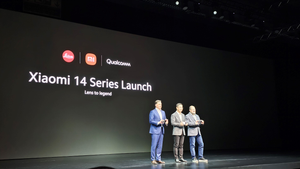T-Mobile warns of friction between net neutrality and network slicing
The FCC's latest net neutrality proposal allows for 'reasonable network management' practices. But T-Mobile and others argue that network slicing – a new 5G technology – needs to be addressed specifically.

The Biden administration is working to reinstate net neutrality rules, but T-Mobile is signaling that new technologies like network slicing don't neatly fit into the FCC's plans.
"Network slicing is a prime example of a cutting-edge technology that could be negatively affected by regulatory uncertainty," T-Mobile wrote in a new filing to the FCC.
T-Mobile isn't the only company sounding the alarm on the issue.
"It takes a long time to develop new technologies to enable things like slicing, and these will require additional investment by operators to implement them into the network to meet consumer and industrial expectations," Nokia wrote. The company said unclear guidelines on the topic would "hang like a regulatory sword of Damocles over the 5G market in the United States."
But public-interest firm Public Knowledge argued that network slicing is already covered under the FCC's "reasonable network management" carveout for net neutrality. "T-Mobile and other industry commenters fail to show why the Commission should weaken its rules in consideration of newer network management techniques," the firm wrote. Public Knowledge noted that the FCC's language is already technology-neutral and "newer network management technologies such as network slicing do not merit revisiting this approach."
The topic is critical to the 5G industry in the US, which has widely discussed network slicing as a technology that could help dramatically boost revenues. T-Mobile, for its part, recently began offering a network slicing beta program to allow developers to build video calling services. More recently it created a network slice for patrons at last year's Formula One Grand Prix in Las Vegas.
Meanwhile, both AT&T and Verizon are working on similar offerings. For example, The Wall Street Journal reported late last year that Nvidia is testing its cloud gaming service, GeForce NOW, on AT&T's network slicing service. Similarly, FierceWireless noted Verizon created a slice for a Formula 1 racer in November.
Network slicing stems from the standalone (SA) version of 5G. T-Mobile launched 5G SA in 2021, while AT&T said late last year that it's moving some customers to its own standalone 5G platform. Verizon said late last year it's still testing the technology.
A question of prioritization
At its core, network slicing promises to create a walled-off sliver inside a wireless network that would offer different capabilities than connections on a standard, public network. For example, a utility could buy a slice with a higher level of reliability, or a cloud gaming company could use a slice with faster speeds and lower latency.
As T-Mobile pointed out, the technology is rapidly moving throughout the globe. For example, the company noted that Indian operator Reliance Jio Infocomm offers slices for its fixed wireless service and its mobility offerings. And in Germany, the Hamburg S-Bahn relies on network slicing to operate autonomous trains.
But network slicing would appear to run afoul of a core principle of net neutrality: to prevent the creation of "fast lanes" for those who can pay more.
The FCC initially voted to enact its net neutrality guidelines during the Obama administration. But those rules were overturned during the Trump administration under FCC Chair Ajit Pai. After Biden replaced Trump and gained Democratic control of the FCC, the agency proposed a new set of net neutrality rules. Thus, it's likely that, if Trump wins a second term, he would overturn them again.
In general, telecom companies like AT&T, Comcast and Verizon argue that net neutrality rules are not needed. Moreover, they already operate some services with slice-like characteristics. Verizon's Frontline service, for example, ensures that public-safety users receive a higher priority than other users, increasing their chances of connecting when the network is congested.
But public-interest groups counter that the Internet has become important enough to modern-day life that some kind of government oversight is needed.
The T-Mobile proposal
In a December filing, T-Mobile issued a 66-page response to the FCC's latest net neutrality proposal that largely focused on the topic of network slicing. The filing delved into many of the complex legal definitions the FCC has used in its various net neutrality efforts, including the term "broadband internet access services" (BIAS) and the concept that net neutrality ought to cover "mass-market retail" services covering "substantially all Internet endpoints" but not necessarily "specialized" Internet connections like virtual private networks (VPNs) or content delivery networks (CDNs).
As T-Mobile notes, the FCC's latest proposal allows for "reasonable network management" practices, including ones that are "primarily used for and tailored to achieving a legitimate network management purpose, taking into account the particular network architecture and technology of the broadband internet access service."
T-Mobile argued that a reasonable network management exception is "essential" to network optimization. But it argued for two updates that would account for network slicing:
1. "Defining a 'network management practice' simply as one that has a technical purpose will be superior to a standard that tries to distinguish a 'primarily technical' purpose from 'other business practices.'"
2. "Acknowledging that, so long as network management functions for broadband Internet access service do not discriminate between similar applications, network management activities may include a wide variety of practices, including measures aimed at ensuring network security and integrity; addressing unwanted or harmful traffic; reducing or mitigating congestion; and optimizing or improving network performance, efficiency, and reliability – would provide valuable guidance to operators and the public on the types of activities that fall within the exception."
T-Mobile wrote that the FCC's definition of "reasonable network management" might conceivably be broad enough. But the company said the agency should write rules "that eliminate ambiguity."
Concluded T-Mobile: "A targeted update to the definition of 'reasonable network management' that accommodates emerging network management techniques will make it easier for providers to offer more valuable services to end-users, make the delivery of services more efficient, and support the development and deployment of beneficial specialized services."
A growing debate
In fresh comments to the FCC this week, a range of companies and trade associations debated T-Mobile's network slicing proposals.
"Network management is of particular importance to mobile wireless networks," wrote the Wireless Infrastructure Association (WIA), a trade group that primarily represents cell tower operators, in its latest FCC filing. "Innovative techniques, like network slicing, have demonstrated how a network operator can dedicate precise channels within its frequency license to meet the specific needs of a given application. Network management like this will be key in unlocking the full potential of 5G networks."
And the CTIA trade association wrote that "network slicing is an important example of an innovative 5G-based functionality that benefits from ongoing, clear delineation between BIAS and non-BIAS." The association primarily supports big wireless network operators like Verizon and AT&T.
Finally, networking equipment vendor Ericsson wrote that it "supports T-Mobile's view that the Commission should 'eliminate hairsplitting distinctions of intent in favor of more definitive guidance about prohibited practices or outcomes.'"
The FCC is widely expected to push its net neutrality proposal forward in the coming months.
About the Author(s)
You May Also Like












